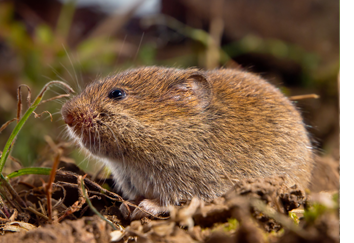Effective Vole Control Solutions: Taking Care Of Vole Pest Issues
Effective Vole Control Solutions: Taking Care Of Vole Pest Issues
Blog Article
Comprehensive Overview to Reliable Vole Parasite Control: Problem Identification and Treatment Approaches
In the world of effective insect control, vole problems present a distinct difficulty that demands a tactical approach. These little rats, typically mistaken for computer mice, can ruin gardens, lawns, and plants if left unchecked. Identifying the indicators of vole presence and implementing targeted therapy methods are essential elements of an effective pest monitoring strategy. By exploring the subtleties of vole habits, understanding vital indicators of invasion, and examining a variety of control alternatives, one can create a thorough technique to fight these evasive bugs.
Comprehending Vole Behavior
Vole habits is identified by their delving habits and fast reproduction rates, making them a tough bug to control properly. Their quick reproductive price further complicates control efforts, with women qualified of creating multiple trashes in a solitary year, each consisting of several spawn.
Understanding vole behavior is crucial for reliable insect control methods. By identifying their burrow places, keeping an eye on feeding areas, and implementing targeted control methods, such as trapping or environment alteration, vole invasions can be taken care of efficiently.
Signs of Vole Invasion

Avoidance Approaches
Implementing efficient prevention approaches is critical in minimizing vole problems and securing vegetation from their devastating feeding habits. To prevent vole infestations, it is crucial to start by removing possible food sources and shelter.
Consistently examining the building for indicators of vole activity, such as paths and delve openings, is important vole yard damage for early detection and timely activity. If vole activity is thought, consider making use of traps or repellents strategically put near their pathways.
Non-Lethal Control Methods
To effectively manage vole populations while focusing on humane techniques, non-lethal control approaches supply functional solutions for lowering vole damages in landscapes and yards. These obstacles can be buried at the very least 12 inches deep and curved at a 90-degree angle to avoid voles from burrowing underneath.

Lethal Control Options
One efficient technique for resolving vole infestations in gardens and landscapes involves the calculated usage of deadly control choices. When faced with a serious vole infestation that non-lethal techniques have failed to have, carrying out dangerous control procedures becomes important. Overall, when employing lethal control options, it is vital to do so sensibly and in accordance with local regulations to efficiently handle vole problems.
Conclusion
In verdict, reliable vole parasite control needs a detailed understanding of vole behavior, identification of indications of problem, application of avoidance techniques, and utilization of both non-lethal and dangerous control methods. By combining these techniques, individuals can efficiently handle vole populaces and safeguard their home from damages. It is necessary to resolve vole infestations without delay to stop more issues and lessen the effect on the surrounding environment.
Offered the detailed passage systems and rapid recreation prices particular of voles, recognizing the indicators of vole problem comes to be important in reliable pest control. One of the key indicators of vole visibility is the presence of surface area runways or tracks in grass or snow, generally concerning 1-2 inches broad, created as voles take a trip in between their burrows and food sources.To properly handle vole populations while focusing on gentle techniques, non-lethal control strategies offer functional remedies for minimizing vole damage in yards and landscapes.One effective technique for resolving vole invasions in landscapes and yards entails the critical usage of dangerous control choices. vole lawn damage.In conclusion, efficient vole pest control requires an extensive understanding of vole habits, identification of signs of problem, application of prevention techniques, and use of both non-lethal and deadly control techniques
Report this page